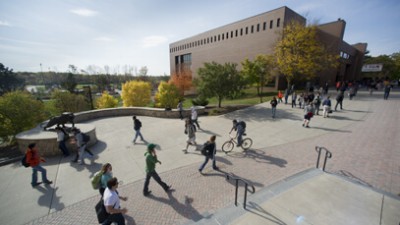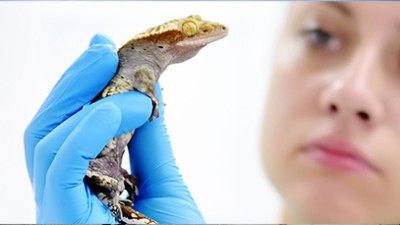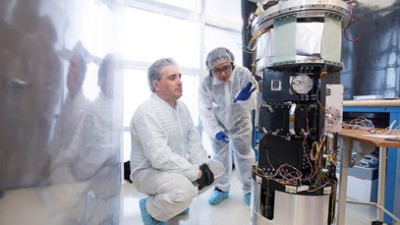News
School of Physics and Astronomy
-
November 18, 2020
![illustration of the New Horizons spacecraft in space.]()
Scientists Discover Outer Space Isn't Pitch Black After All
NPR talks to Michael Zemcov, assistant professor in the School of Physics and Astronomy, about a new study on light outside of known galaxies.
-
November 11, 2020
![four student researchers wearing masks in a quantum research lab.]()
New study outlines steps higher education should take to prepare a new quantum workforce
Three researchers, including RIT Associate Professor Ben Zwickl, suggested steps that need to be taken in a new paper in Physical Review Physics Education Research after interviewing managers at more than 20 quantum technology companies across the U.S.
-
October 29, 2020
![machine with a green laser beam.]()
Hands-On Lab Skills Key for Quantum Jobs
Physics talks to Ben Zwickl, associate professor in the School of Physics and Astronomy, about quantum physics
-
October 29, 2020
![chart showing masses of blck holes in in the 50 gravitational wave events detected to date.]()
LIGO and Virgo announce 39 new gravitational wave discoveries during first half of third observing run
The LIGO Scientific Collaboration and Virgo Collaboration released a catalog of results from the first half of its third observing run (O3a), and scientists have detected more than three times as many gravitational waves than the first two runs combined. Several researchers from RIT’s Center for Computational Relativity and Gravitation were heavily involved in analyzing the gravitational waves and understanding their significance.
-
October 21, 2020
![College of Science Professor Emeritus Linda Barton.]()
Professor Emeritus Linda Barton honored for laboratory instruction by American Physical Society
Professor Emeritus Linda Barton is the 2021 recipient of the Jonathan F. Reichert and Barbara Wolff-Reichert Award for Excellence in Advanced Laboratory Instruction.
-
October 21, 2020
![professor standing on stairs in atrium of college.]()
RIT scientist receives NSF funding to explore cellular compartmentalization in bacteria
Moumita Das, an associate professor in RIT’s School of Physics and Astronomy, received funding from the National Science Foundation to better understand the fundamental rules that allow bacteria to compartmentalize the functions within their cells.
-
October 14, 2020
![researchers in masks working in a lab.]()
L3Harris becomes industry partner for RIT’s Future Photon Initiative
RIT’s Future Photon Initiative (FPI) and L3Harris have entered into a new industry partnership to develop quantum technologies. The partners will begin developing next steps for experiments and analysis focused on quantum information processing for communication, sensing, and computing.
-
September 30, 2020
![professor giving presentation at podium.]()
RIT Professor Scott Franklin named American Physical Society Fellow
RIT Professor Scott Franklin has been elected a fellow of the American Physical Society. The fellowship is a selective and prestigious recognition by peers for outstanding contributions to physics.
-
September 14, 2020
![aerial view of buildings on RIT campus.]()
RIT again ranked among the best universities in the nation by U.S. News
RIT has again been recognized as one of the best national universities by U.S. News & World Report, which also cited the university as among the most innovative, with strong undergraduate research opportunities and a highly regarded cooperative learning program.
-
September 9, 2020
![artist's concept illustrating a hierarchical scheme for merging black holes.]()
RIT scientists contribute to the first discovery of an intermediate-mass black hole
The LIGO Scientific Collaboration and the Virgo Collaboration recently announced the discovery of GW190521, the most massive gravitational wave binary observed to date, and Rochester Institute of Technology scientists played an important role in identifying and analyzing the event.
-
September 4, 2020
![two presenters sitting at a table with laptops and projector screen behind them.]()
RIT’s College of Science awarded NSF grant to train emerging STEM education researchers
The National Science Foundation awarded RIT’s College of Science a three-year, $587,000 Building Capacity in STEM Education Research grant. The grant is part of a $1 million collaborative project that aims to extend the impact of the Professional development for Emerging Education Researchers (PEER) field school model to hundreds of emerging education researchers.
-
June 18, 2020
![x-ray flare from a very young star.]()
X-rays From a Newborn Star Hint at Our Sun's Earliest Days
NASA mentions Joel Kastner, professor in the Chester F. Carlson Center for Imaging Science and School of Physics and Astronomy, and alumnus David Principe '10 Ph.D. (astrophysical science and technology) for being part of a team that observed an X-ray flare from a very young star using NASA's Chandra X-ray Observatory.
















